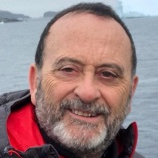Rocky Coasts: Quaternary Sedimentary Successions and Modern Analogues
A special issue of Geosciences (ISSN 2076-3263).
Deadline for manuscript submissions: closed (15 December 2022) | Viewed by 4324
Special Issue Editors
Interests: quaternary geology; luminescence dating; stratigraphy and basin analysis
Special Issues, Collections and Topics in MDPI journals
Interests: quaternary; luminescence dating; sea level and climate changes; sedimentary geology; sedimentology stratigraphy; neotectonics; geodynamics
Special Issues, Collections and Topics in MDPI journals
Interests: coastal geomorphology; quaternary
Special Issues, Collections and Topics in MDPI journals
Special Issue Information
Dear Colleagues,
Rocky coasts are peculiar depositional environments dominated by barely exposed wave-cut platforms with veneer of bouldery deposits and/or sandy to gravelly pocket beaches accumulating in coves between rocky headlands. Although rocky coasts extend along about 80% of the coasts worldwide, their erosional features and sedimentary sequences have received less attention than the well-developed sandy coast systems. This is unfortunate because the interaction between the geosphere, hydrosphere and biosphere in controlling the formation and the evolution of rocky coastal areas is not fully understood. Moreover, forecasting the response of rocky coasts to future rising sea-level and increasing storminess yields significant improvements to mitigate geological risks.
Quaternary flights of marine terraces are geological features found and studied worldwide and used to track sea-level fluctuations and accurately quantify the net vertical displacement of active tectonic coasts. Sedimentary coastal sequences covering marine terraces are usually characterized by relatively thin shallow marine deposits unconformably lying on the terrace. Sequence passes upward to thick compound dunes and/or alternation of aeolian and colluvial/alluvial systems. These aeolian systems show various dune types (barchans, climbing, clifftop, sand ramp, etc.), and the alternation with colluvial–alluvial bodies may reflect millennial-scale climate changes. This Special Issue focuses on recent advances in the study of rocky coasts with emphasis on (i) facies analysis and depositional profile of sandy, mixed and bouldery pocket beaches; (ii) coastal dune formations and evolutions; (iii) rocky shore evolution; (iiii) the discrimination of global to local and/or human-induced forcing factors on erosion/sedimentation of Quaternary rocky coastal sequences.
Contributions in all possible fields of Earth science related to rocky coastal environments are encouraged.
Dr. Stefano Andreucci
Dr. Daniele Sechi
Prof. Dr. Augusto Pérez-Alberti
Guest Editors
Manuscript Submission Information
Manuscripts should be submitted online at www.mdpi.com by registering and logging in to this website. Once you are registered, click here to go to the submission form. Manuscripts can be submitted until the deadline. All submissions that pass pre-check are peer-reviewed. Accepted papers will be published continuously in the journal (as soon as accepted) and will be listed together on the special issue website. Research articles, review articles as well as short communications are invited. For planned papers, a title and short abstract (about 250 words) can be sent to the Editorial Office for assessment.
Submitted manuscripts should not have been published previously, nor be under consideration for publication elsewhere (except conference proceedings papers). All manuscripts are thoroughly refereed through a single-blind peer-review process. A guide for authors and other relevant information for submission of manuscripts is available on the Instructions for Authors page. Geosciences is an international peer-reviewed open access monthly journal published by MDPI.
Please visit the Instructions for Authors page before submitting a manuscript. The Article Processing Charge (APC) for publication in this open access journal is 1800 CHF (Swiss Francs). Submitted papers should be well formatted and use good English. Authors may use MDPI's English editing service prior to publication or during author revisions.
Keywords
- dynamics and evolution of cliffs, shore platforms and bouldery beaches
- mixed sandy–gravelly pocket beaches
- marine terraces
- beachrocks
- coastal dunes
- neotectonics
- millennial-scale climate changes (Heinrich events, D–O cycles)
- Holocene–Anthropocene
Benefits of Publishing in a Special Issue
- Ease of navigation: Grouping papers by topic helps scholars navigate broad scope journals more efficiently.
- Greater discoverability: Special Issues support the reach and impact of scientific research. Articles in Special Issues are more discoverable and cited more frequently.
- Expansion of research network: Special Issues facilitate connections among authors, fostering scientific collaborations.
- External promotion: Articles in Special Issues are often promoted through the journal's social media, increasing their visibility.
- Reprint: MDPI Books provides the opportunity to republish successful Special Issues in book format, both online and in print.
Further information on MDPI's Special Issue policies can be found here.







